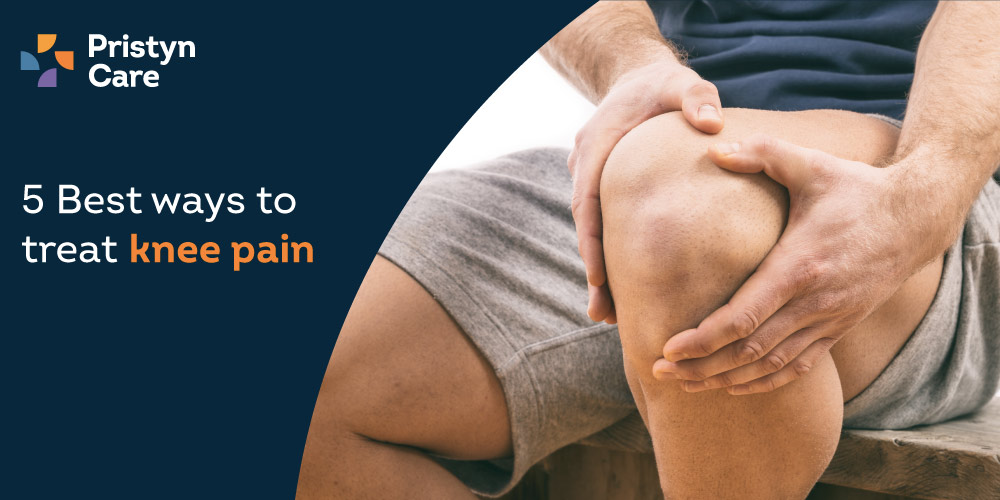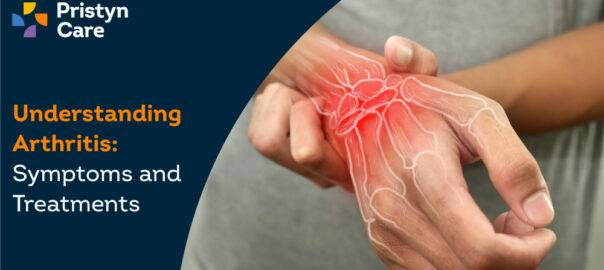![]() Views: 307
Views: 307
5 Best Ways to Treat Knee Pain
Knee pain is a common problem that causes inflammation or irritation in the knee joint. Temporary knee pain usually occurs because of injury. There are various other reasons that can cause knee pain, including aging, cartilage tear, sprain or strain in the ligament or meniscus, and arthritis.
Dedicated Support at Every Step!
Our Doctors are available 24 hours a day, 7 days a week to help you!
Knee pain is a common problem that causes inflammation or irritation in the knee joint. Temporary knee pain usually occurs because of injury. There are various other reasons that can cause knee pain, including aging, cartilage tear, sprain or strain in the ligament or meniscus, and arthritis.
Treatment for knee pain depends on the severity and reason of knee pain. If the pain is not severe, a doctor will likely prescribe medicines or lifestyle modifications to relieve the pain. Whereas if the pain is intense and persists for long, then it may require surgical intervention. Read on to learn more about the different ways to treat knee pain.
Table of Contents
Five Best Ways to Treat Knee Pain
Medicines
Medicines are usually recommended to treat mild to moderate knee pain. A doctor prescribes over-the-counter medications (OTD), such as nonsteroidal anti-inflammatory drugs (NSAIDs), that help relieve inflammation and reduce pain. Some common NSAIDs include
- Ibuprofen (Advil)
- Naproxen sodium (Aleve)
- Acetaminophen (Tylenol)
These medications significantly reduce knee pain, swelling, and inflammation in the knee joint. The dosage of medicines varies depending on the various factors, including age and severity. For instance, the ibuprofen dosage is usually 800-1,200 milligrams (mg) daily for adults. You must follow the instructions provided by your healthcare provider regarding the dosage to get the maximum benefits from the medication.
Home remedies
Home remedies are effective only in cases of mild knee pain. They can improve the comfort level and help manage the symptoms. Some common home remedies include:
- Compression: You can wrap the affected area with a compression bandage to stabilize the knee and reduce swelling.
- Turmeric: Turmeric is a potent anti-inflammatory and antioxidant that helps reduce knee pain. Incorporate turmeric into your diet to reduce inflammation.
- Heat therapy: You can apply a heating pad or warm towel to the knee to improve blood circulation and relax muscles. It also reduces stiffness and helps regain mobility.
- Rest and elevation: Take proper rest and avoid any physical activity to lessen the chances of strain on the knee. Elevate your knee higher than the level of the heart to reduce knee swelling and help the excess fluid drain back into the body’s system.
- Ice packs: Ice packs are effective in reducing pain and inflammation. You can apply ice packs or cold compresses around the affected area to ease swelling and numb the pain.
Lifestyle modifications
Some common lifestyle modifications that you can adopt to manage knee pain,
- Weight management: Being overweight and obese is one of the reasons for knee pain. Excess body weight puts pressure on the knee joints, which leads to knee pain. For example, people with high body mass index (BMI) have higher chances of developing arthritis as compared to people with lower body mass index (BMI).
In order to achieve a healthy weight, you must manage your diet and need to do some exercises. However, you can also use crutches braces temporarily to reduce the weight on the knee.
- Proper posture: It is extremely important to maintain the right posture to manage knee pain. The following are some sitting postures that you can try to reduce knee pain:
- Sit with legs crossed
- Bent your knees to the side
- Sit with legs straight ahead
- Maintain a healthy diet: It is essential to modify your diet and include foods and supplements that aid in reducing inflammation. Enrich your diet with foods that are rich in omega-3 fatty acids, such as fish, soybeans, chia seeds, walnuts, etc. These food items help combat inflammation in the joint and reduce knee pain and stiffness.
Exercises
Exercising every day helps in maintaining mobility and also keeps your muscles strong. You can try low-impact exercises, such as cycling, swimming, and walking, to enhance circulation and increase mobility. Flexibility and strength exercises, such as water aerobics quadriceps stretch, can also help reduce knee pain.
Surgical Options
If the knee pain is severe and causes stiffness and instability that affect your life and daily activities, then it may require surgical treatment. Knee replacement is also considered the ideal treatment for osteoarthritis, rheumatoid arthritis, post-traumatic arthritis, avascular necrosis, and other inflammatory arthritis. There are four different types of knee replacement surgery, including:
- Total knee replacement: In this procedure, a surgeon removes the damaged cartilage surfaces with a metal component to recreate the surface of the joint. It is usually recommended for severe knee pain, chronic knee inflammation, knee deformity, etc.
- Partial knee replacement: In this type of knee replacement, only the affected part of the knee is replaced with metal or plastic components. During this procedure, healthy parts of the bone, cartilage, and ligaments are preserved.
- Kneecap replacement: In this procedure, a surgeon removes the damaged surfaces of the knee joint and resurfaces the knee joint with the prosthesis. This surgery helps improve the range of motion and function of the knee joint.
- Revision knee replacement: A doctor usually recommends this surgery if the previous knee replacement fails. During this procedure, a doctor removes some or all the parts of the previous prosthesis and replaces them with the new ones.
Conclusion
Knee pain treatment varies from patient to patient. If you are suffering from knee pain, then it is important to undergo a detailed diagnosis to understand the severity of the condition and plan out the best treatment accordingly. If the pain is moderate, then it can be easily managed with medication and lifestyle changes. But if the pain is severe, then it may require surgical intervention.














